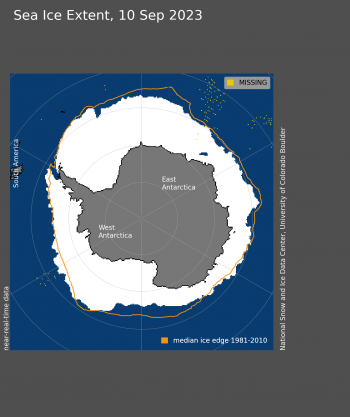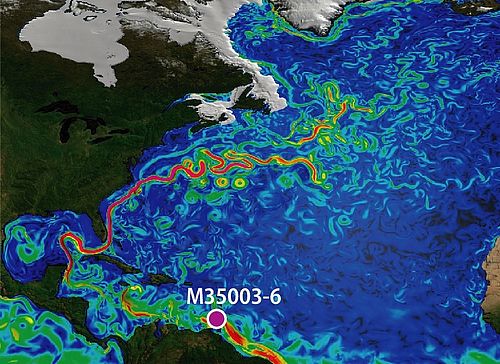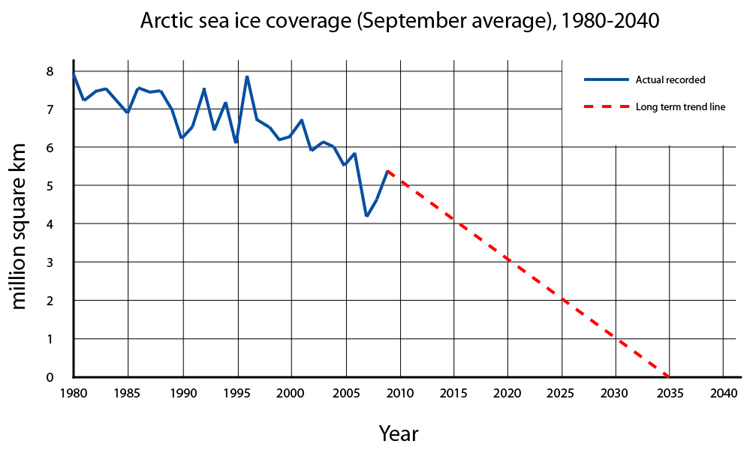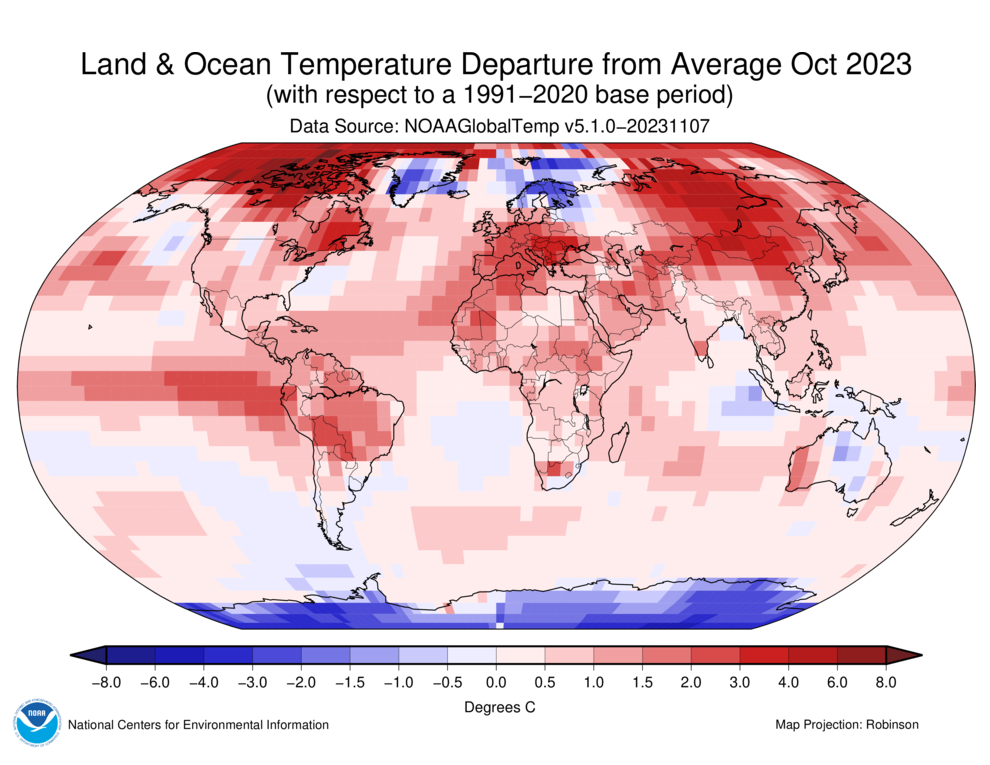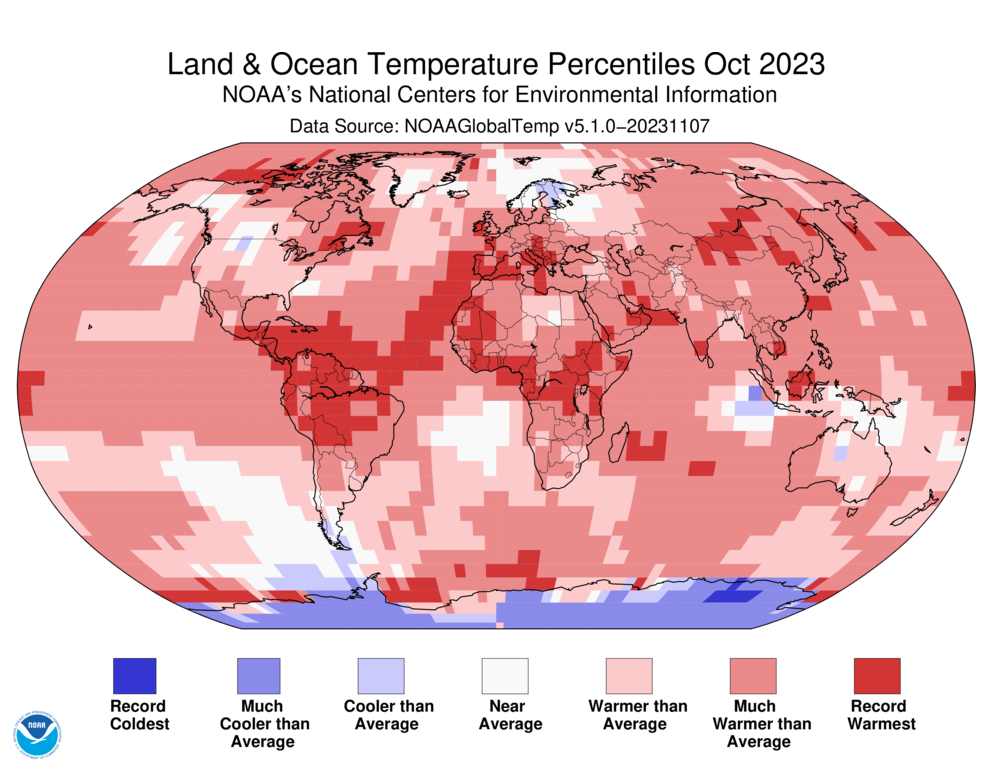time for a check on the earth's temperature
you know, the unfolding disaster mankind is ushering in
August was warm, very warm

Powered by ZingChart
For the fifth consecutive month, global ocean surface temperature hit a record high. El Niño conditions that emerged in June continued into August, and NOAA's Climate Prediction Center issued a statement announcing a greater than 95% chance that El Niño will continue through the Northern Hemisphere winter. Globally, August 2023 set a record for the highest monthly sea surface temperature anomaly (+1.03°C or +1.85°F) of any month in NOAA's 174-year record.
Temperatures were above average throughout most of South America, Africa, Asia, North America, the Arctic and Oceania. Parts of southern North America, central South America, western and central Africa, central, southern, and eastern Asia, and northwestern and eastern Oceania experienced record-warm temperatures this month. Sea surface temperatures were above average across much of the northern, western, and southeastern Pacific, the Atlantic and the Indian Oceans. Record-warm temperatures covered nearly 13% of the world's surface this August, which was the highest August percentage since the start of records in 1951.
Temperatures were near to cooler than average across parts of the western and northeastern U.S., northeastern Russia and Antarctica. Sea surface temperatures were near to below average over parts of the southeastern and eastern tropical Pacific. Less than 1% of the world's surface had a record-cold August.
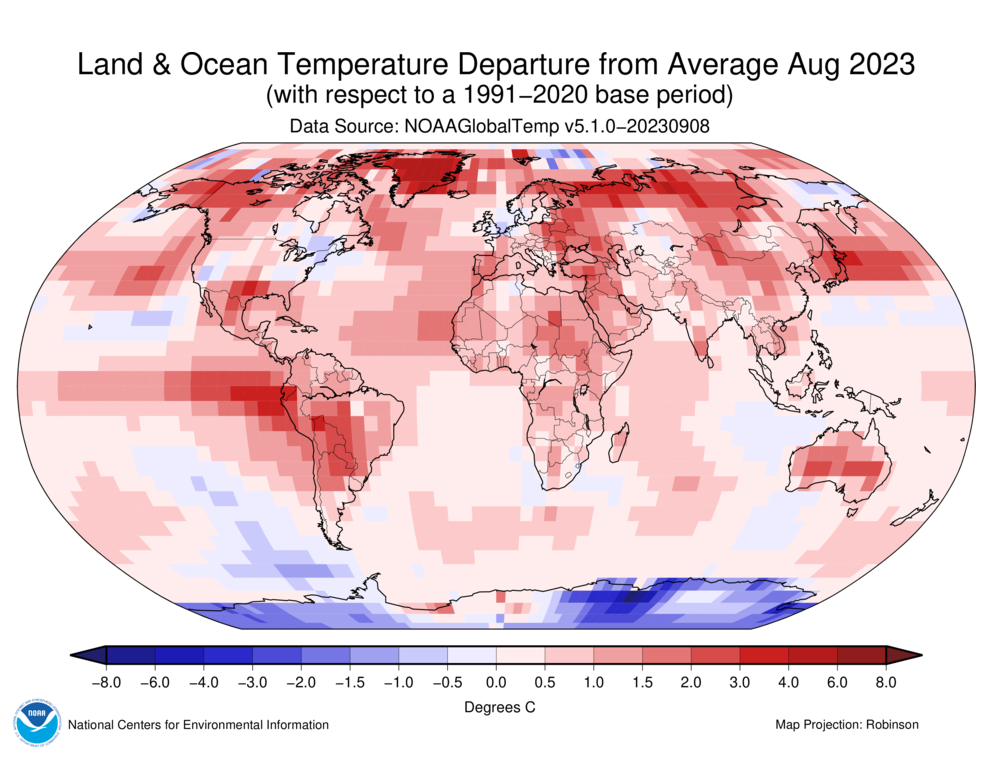
August 2023 Blended Land and Sea Surface Temperature Anomalies in degrees Celsius
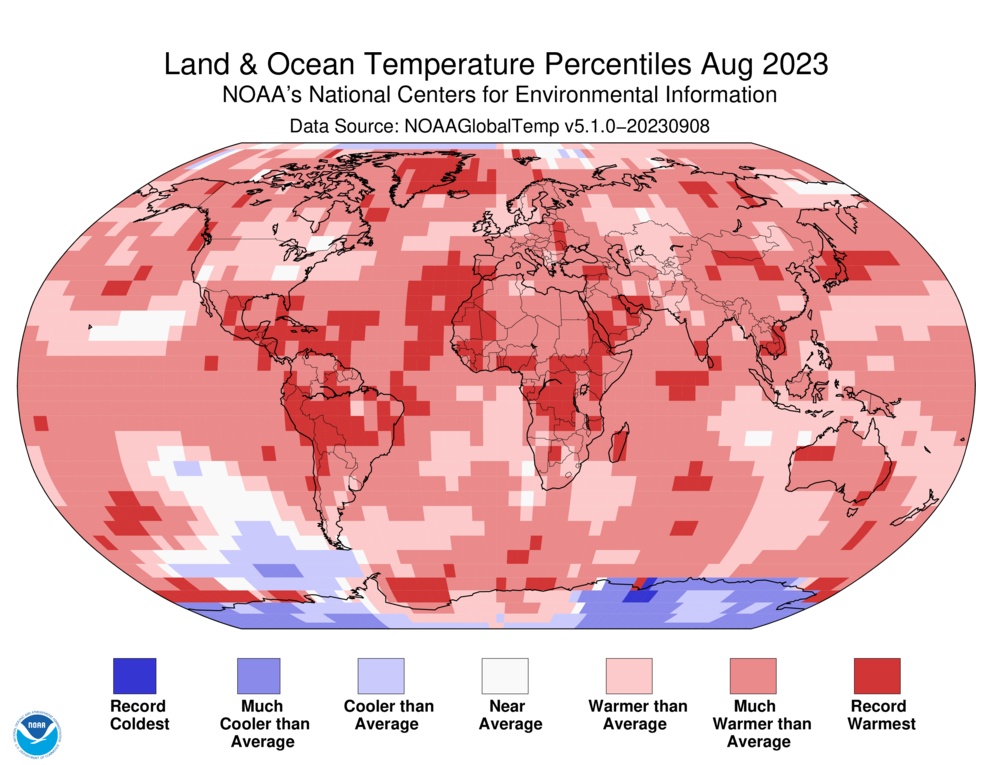
August 2023 Blended Land and Sea Surface Temperature Percentiles
A smoothed map of blended land and sea surface temperature anomalies is also available.
North America, Asia, Africa, and South America each had their warmest August on record. South America had its highest monthly temperature anomaly of any month on record at +2.40°C (+4.32°F).
you know, the unfolding disaster mankind is ushering in
August was warm, very warm
August 2023
The August global surface temperature was 1.25°C (2.25°F) above the 20th-century average of 15.6°C (60.1°F), making it the warmest August on record. This marked the first time an August temperature exceeded 1.0°C (1.8°F) above the long-term average. August 2023 was 0.29°C (0.52°F) warmer than the previous August record from 2016, but the anomaly was 0.10°C (0.18°F) lower than the all-time highest monthly temperature anomaly on record (March 2016). However, the August 2023 temperature anomaly was the third-highest anomaly of any month on record. August 2023 marked the 45th-consecutive August and the 534th-consecutive month with temperatures at least nominally above the 20th-century average.Powered by ZingChart
For the fifth consecutive month, global ocean surface temperature hit a record high. El Niño conditions that emerged in June continued into August, and NOAA's Climate Prediction Center issued a statement announcing a greater than 95% chance that El Niño will continue through the Northern Hemisphere winter. Globally, August 2023 set a record for the highest monthly sea surface temperature anomaly (+1.03°C or +1.85°F) of any month in NOAA's 174-year record.
Temperatures were above average throughout most of South America, Africa, Asia, North America, the Arctic and Oceania. Parts of southern North America, central South America, western and central Africa, central, southern, and eastern Asia, and northwestern and eastern Oceania experienced record-warm temperatures this month. Sea surface temperatures were above average across much of the northern, western, and southeastern Pacific, the Atlantic and the Indian Oceans. Record-warm temperatures covered nearly 13% of the world's surface this August, which was the highest August percentage since the start of records in 1951.
Temperatures were near to cooler than average across parts of the western and northeastern U.S., northeastern Russia and Antarctica. Sea surface temperatures were near to below average over parts of the southeastern and eastern tropical Pacific. Less than 1% of the world's surface had a record-cold August.

August 2023 Blended Land and Sea Surface Temperature Anomalies in degrees Celsius

August 2023 Blended Land and Sea Surface Temperature Percentiles
A smoothed map of blended land and sea surface temperature anomalies is also available.
North America, Asia, Africa, and South America each had their warmest August on record. South America had its highest monthly temperature anomaly of any month on record at +2.40°C (+4.32°F).
- Peru had its warmest August on record.
- August in Japan ranked warmest on record.
- Hong Kong recorded its warmest August on record.
- Turkey recorded its second-warmest August on record.
- August in Israel ranked fifth warmest since records began in 1950.
- The Arctic had its warmest August on record.
- The Caribbean region had its warmest August on record.
- It was a record-warm August for the Gulf of Mexico.
- August in the contiguous U.S. ranked ninth warmest on record.
- Spain tied 2003 for its warmest August on record, and the Spanish Peninsula and Balearic Islands sweltered under a heatwave for 16 days in August.
- August in Portugal ranked fifth warmest on record.
- Italy recorded its 14th-warmest August on record.
- August in Switzerland ranked among the ten warmest on record.
- August in Estonia was 1.3°C warmer than the long-term average.
- Latvia had its 8th-warmest August on record.
- Averaged as a country, Australia had its second-warmest August since records began in 1910.
- Meanwhile, New Zealand had its coolest August in seven years.

